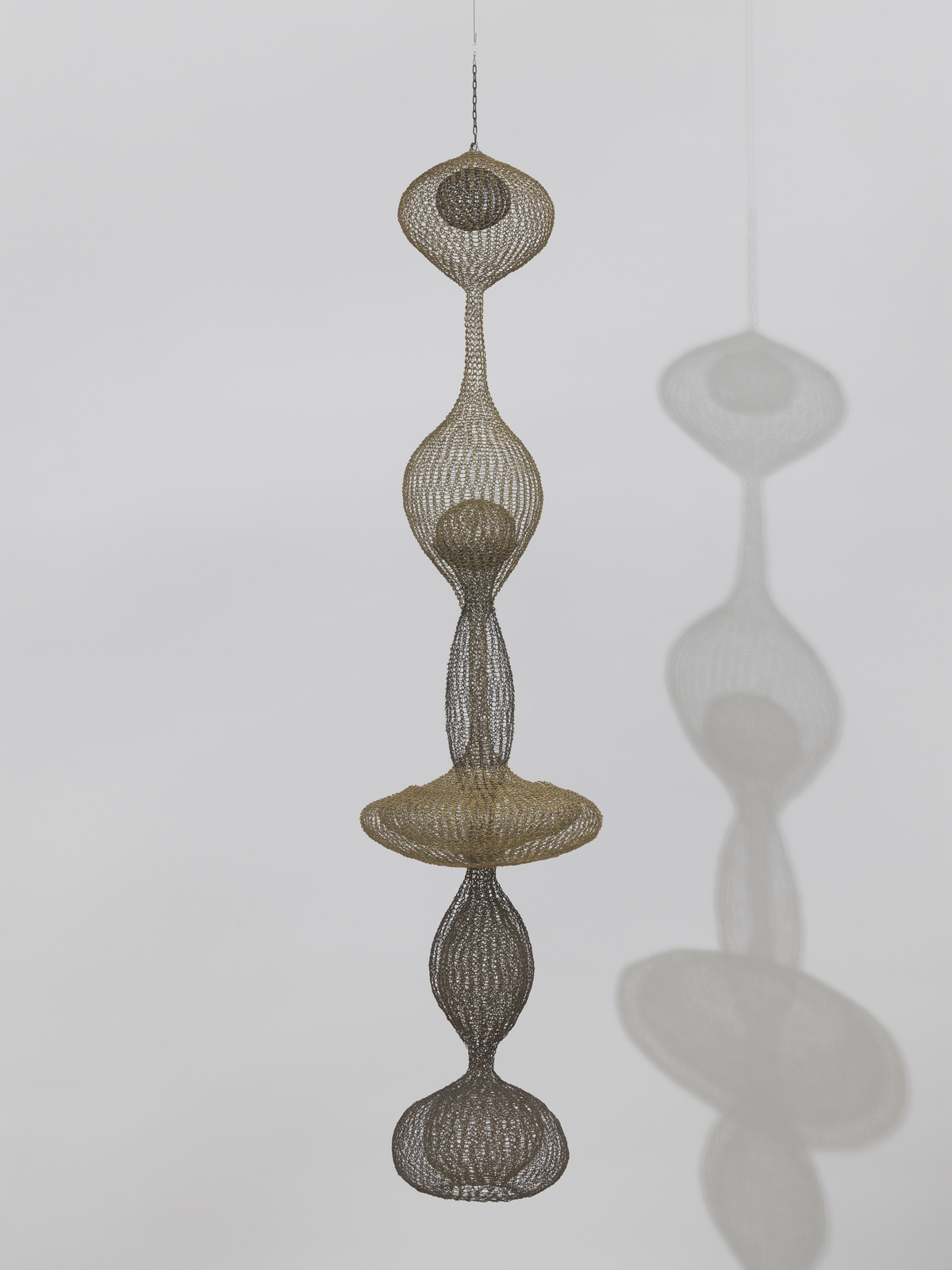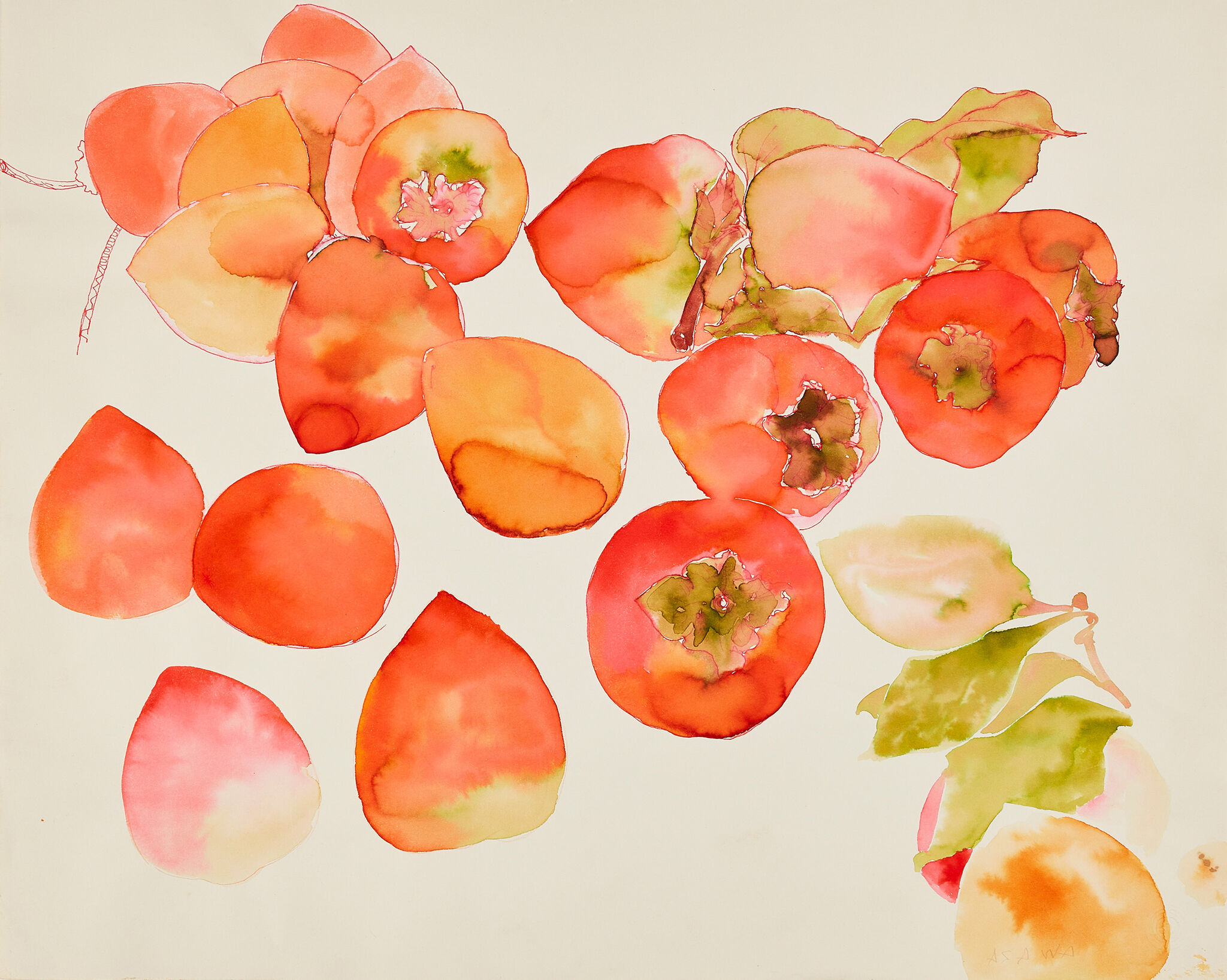Verbal Description: Untitled (S.691, Wall-Mounted Paperfold with Horizontal Stripes), 1951
Aug 30, 2023
0:00
Verbal Description: Untitled (S.691, Wall-Mounted Paperfold with Horizontal Stripes), 1951
0:00
Clara Rojas-Sebesta: My name is Clara Rojas-Sebesta. I'm the Ellsworth Kelly Conservator of Works on Paper.
Narrator: This is Untitled (S.691, Wall-Mounted Paperfold with Horizontal Stripes) from 1951.
Clara Rojas-Sebesta: It's an ink-on-paper sculpture. This large paperfold is about 70 inches tall and 30 inches wide at its widest point. It is an ovoid or leaf shape that is pinched at the top and pinched at the bottom. So you have a rhythm in this work where it's closed at the top, expands and almost breathes in the center, and then comes right back to the bottom, which is also held together with a metal ring. And those would have been the rings that held this on the wall originally.
So the paperfold began as a sheet of paper, 93 by 48 inches. Asawa then painted sixteen black stripes, alternating horizontal black and white stripes. It was then folded accordion-style eight times and then folded again to create sixteen different mountains and valleys, which form the pattern across the paperfold. These are all traditional origami folding techniques that Ruth Asawa used.
In addition to the black and white play of ink on paper, we also have a play of light and shadow as light hits the mountains and valleys of the accordion-folded paper. This is a heavy paper, not a specific art paper. Something that would hold those folds and live up to that sort of handling. The ink has been applied with a brush, so it's not an even black. You really get a sense of her brush work and mark-making throughout the work.
As part of the life of this artwork, it would have been folded and unfolded and the places where Asawa handled it, at the center, were the greatest parts of expansion and contraction. There's handling dents and creases in places where the folds aren't quite as sharp. So it really gives a sense that this is a living object, that this is a performed object that has that movement implied and that's the evidence of it in the hand there.


